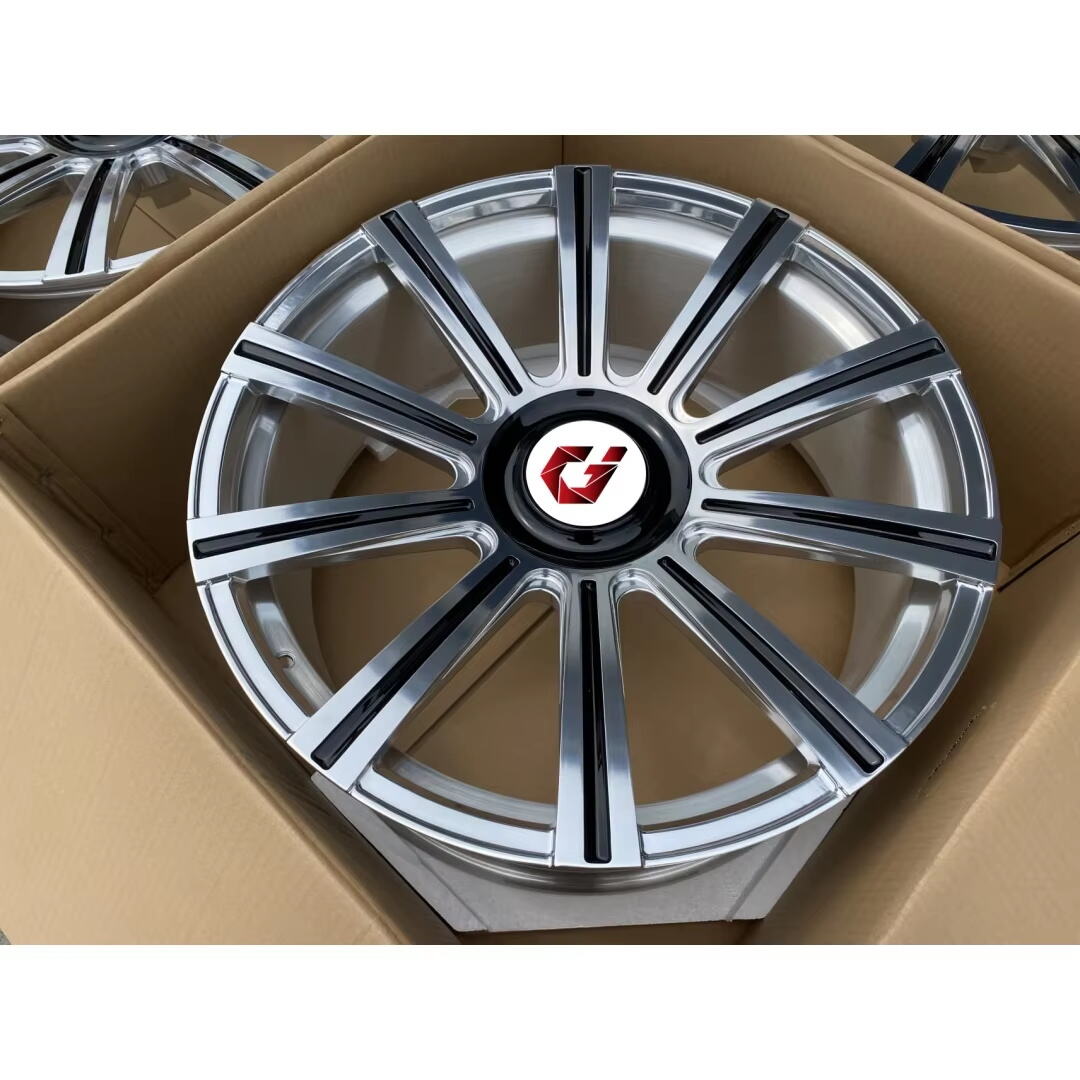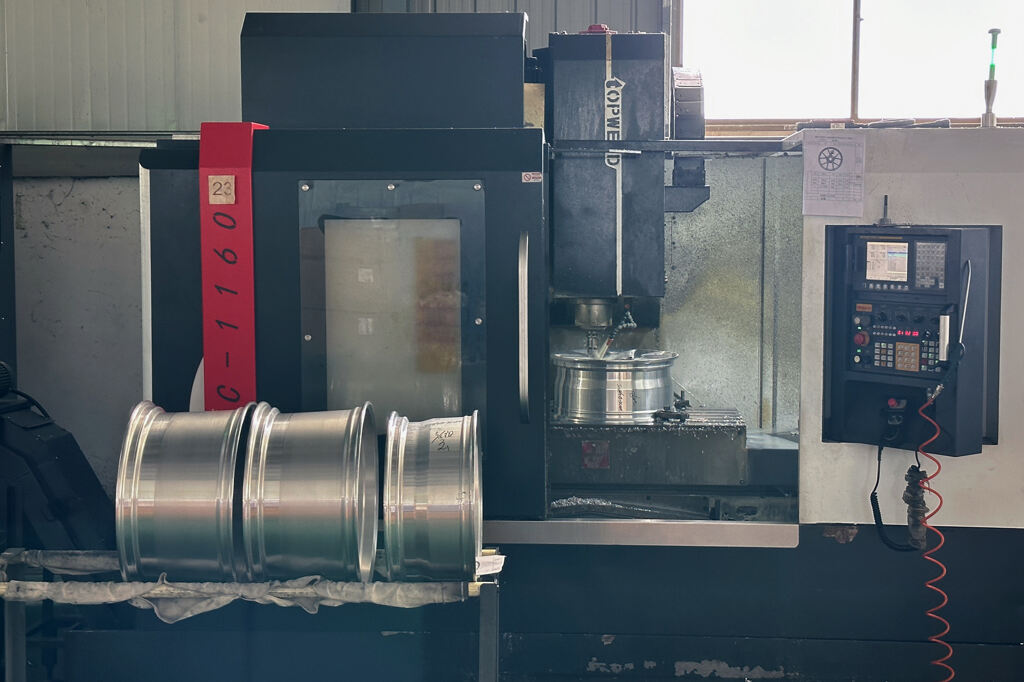How to Choose Alloy Wheels for Performance and Durability
The Ultimate Guide to Performance Alloy Wheels
Selecting the perfect alloy wheels for your vehicle goes far beyond mere aesthetics. These precision-engineered components play a crucial role in your car's performance, handling, and overall driving experience. Alloy wheels have revolutionized the automotive industry, offering a compelling blend of strength, lightweight construction, and enhanced vehicle dynamics. Whether you're a performance enthusiast or simply looking to upgrade your vehicle's appearance, understanding the intricacies of alloy wheels is essential for making an informed decision.
Modern alloy wheels represent the perfect marriage of form and function, incorporating advanced materials and manufacturing techniques to deliver superior performance characteristics. As we delve deeper into this comprehensive guide, you'll discover how these sophisticated components can transform your driving experience while ensuring long-lasting durability.
Understanding Alloy Wheel Construction
Material Composition and Benefits
Alloy wheels are typically crafted from a sophisticated blend of aluminum and other metals, creating a material that offers an optimal balance of strength and weight reduction. The most common alloys used in wheel manufacturing include aluminum combined with magnesium, nickel, or titanium. These carefully engineered combinations result in wheels that are significantly lighter than traditional steel alternatives while maintaining exceptional structural integrity.
The reduced unsprung weight provided by alloy wheels translates directly into improved handling characteristics and better fuel efficiency. The lightweight nature of these wheels allows for quicker acceleration and more responsive braking, while their superior heat dissipation properties help maintain consistent brake performance during demanding driving conditions.
Manufacturing Processes
The production of high-quality alloy wheels involves several sophisticated manufacturing methods, each offering distinct advantages. Cast alloy wheels are created by pouring molten metal into a mold, providing an excellent balance of cost-effectiveness and performance. Forged wheels, while more expensive, undergo an intensive process that compresses aluminum alloy under immense pressure, resulting in a stronger, lighter product with enhanced structural properties.
Flow-formed wheels represent a hybrid manufacturing technique that combines the affordability of casting with some of the performance benefits of forging. This process involves casting the wheel center and then using high-pressure rollers to shape the barrel, creating a stronger, lighter wheel at a more accessible price point.

Sizing and Fitment Considerations
Wheel Dimensions and Specifications
Selecting the correct alloy wheels begins with understanding the critical dimensions that ensure proper fitment. The wheel diameter, width, offset, and bolt pattern must all be carefully considered to maintain optimal vehicle performance. These specifications directly impact everything from tire selection to brake clearance and suspension geometry.
The wheel offset, measured in millimeters, determines how the wheel sits in relation to the vehicle's suspension components. Positive offset means the mounting surface is toward the wheel's outer face, while negative offset places it closer to the inner edge. Choosing the wrong offset can lead to rubbing issues, compromised handling, and accelerated wear on suspension components.
Load Rating Requirements
Each set of alloy wheels comes with a specific load rating that indicates the maximum weight they can safely support. It's crucial to select wheels that meet or exceed your vehicle's requirements, taking into account factors such as payload capacity and towing needs. Exceeding a wheel's load rating can lead to catastrophic failure and compromise safety.
The load rating is particularly important for larger vehicles or those used for commercial purposes. Always factor in the combined weight of passengers, cargo, and any modifications when evaluating whether a particular set of alloy wheels is suitable for your application.
Performance Enhancement Features
Aerodynamic Design Elements
Modern alloy wheels often incorporate sophisticated aerodynamic features that contribute to improved vehicle performance. Spoke designs are carefully engineered to optimize airflow around the wheel and through the brake system, enhancing cooling efficiency and reducing turbulence. These design elements can have a meaningful impact on both performance and fuel economy.
Some high-performance alloy wheels feature integrated air channels or directional spokes that actively direct cooling air toward the brakes. This enhanced ventilation helps maintain optimal brake temperature during aggressive driving, reducing the risk of brake fade and ensuring consistent stopping power.
Structural Reinforcement
Leading alloy wheel manufacturers employ various structural reinforcement techniques to enhance durability without adding excessive weight. Rim flanges may be reinforced to better resist impact damage, while spoke designs are optimized to distribute loads evenly across the wheel. These engineering considerations are particularly important for performance applications where the wheels must withstand increased stress.
Advanced computer modeling and testing procedures help manufacturers identify potential stress points and optimize designs accordingly. The result is alloy wheels that offer exceptional strength-to-weight ratios and reliable performance under demanding conditions.
Maintenance and Longevity
Cleaning and Protection
Proper maintenance is essential for preserving both the appearance and structural integrity of alloy wheels. Regular cleaning using pH-neutral wheel cleaners helps prevent the accumulation of brake dust and road grime that can lead to corrosion. Avoid harsh chemicals that may damage the wheel's protective finish or clear coat.
Applying a quality wheel sealant or ceramic coating provides an additional layer of protection against environmental contaminants and makes routine cleaning easier. These protective treatments can help maintain the wheel's appearance while preventing oxidation and corrosion that might compromise structural integrity.
Damage Prevention
Taking proactive steps to prevent damage is crucial for maximizing the lifespan of alloy wheels. This includes maintaining proper tire pressure to avoid rim damage, being cautious when parking near curbs, and promptly addressing any signs of damage or imbalance. Regular wheel balancing and rotation help ensure even wear and optimal performance.
Winter driving presents additional challenges for alloy wheels, as road salt and harsh conditions can accelerate corrosion. Consider using dedicated winter wheels during severe weather conditions to protect your premium alloy wheels from unnecessary exposure to damaging elements.
Frequently Asked Questions
What makes alloy wheels better than steel wheels?
Alloy wheels offer several advantages over steel wheels, including reduced weight, better heat dissipation, improved handling characteristics, and enhanced aesthetic appeal. Their lighter weight reduces unsprung mass, leading to better acceleration, braking, and fuel efficiency, while their superior thermal properties help maintain brake performance during demanding driving conditions.
How often should alloy wheels be professionally inspected?
It's recommended to have alloy wheels professionally inspected at least once a year or every 12,000 miles, whichever comes first. However, if you notice any vibration, steering wheel shimmy, or visible damage, immediate inspection is warranted to ensure safety and prevent further deterioration.
Can damaged alloy wheels be repaired?
Minor cosmetic damage to alloy wheels, such as scratches and small chips, can often be professionally repaired. However, structural damage, severe bends, or cracks typically require wheel replacement to maintain safety. Always have repairs performed by qualified professionals using appropriate techniques and materials.
Recommended Products
 Hot News
Hot News
-
Forged Carbon Products
2024-05-21
-
Forged Off-Road Accessories
2024-05-21
-
GVICHN Introduces Revolutionary Forged Two-Piece Product
2024-05-21







 ONLINE
ONLINE